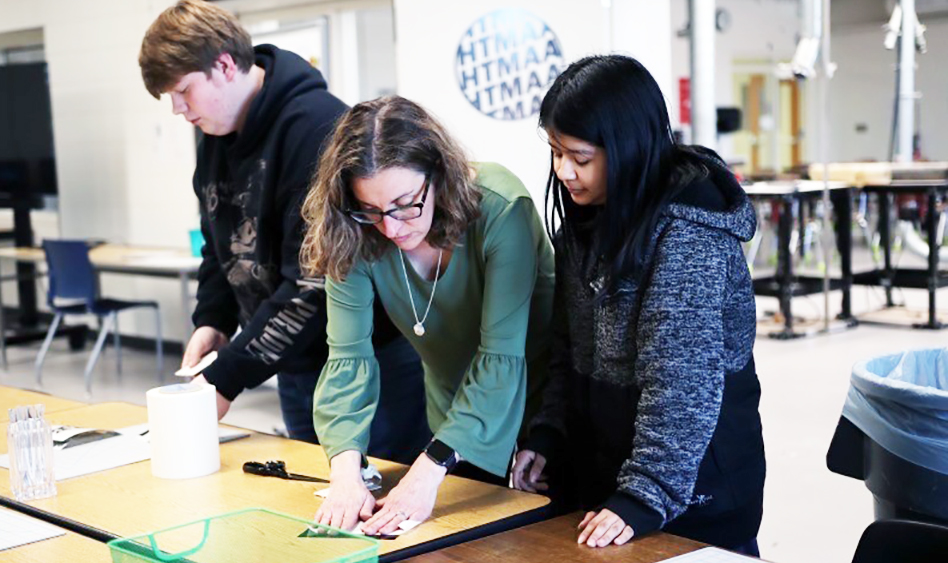
In her fourth year of teaching in the technology, engineering, and design pathway at Spring Lake Park High School, Curriculum and Instruction alumna Karen Kutz (‘18) is helping students learn how to solve problems with computer-aided design (CAD), robotics, and a woodshop-turned-makerspace. “It’s the most amazing thing to see students who have struggled come into my classroom and produce stellar work. It’s a different classroom format and different style of learning, “ Kutz says of her “How to Make” class where students create three to four projects and focus on problem solving through the design process.
“It’s a fun way to get kids into STEM. They reflect on the design process and think critically on how to improve the product they created, “ Kutz says. Students have the opportunity to design and create products using CAD and the 3-D printer, seeing their creations come to life.
Kutz is committed to getting more diverse students interested in STEM. She restarted the school’s robotics team last year with the help of a colleague in hopes of offering more avenues for hands-on STEM learning. “The team is 50 percent female and pretty diverse, which isn’t necessarily reflected in the classes right now.”
From Professional to Professional Educator
Kutz had extensive professional experience using design to solve problems before she graduated from the MEd and licensure program in science education in the Department of Curriculum and Instruction. For 20 years, she worked at Medtronic in a number of roles, and ended up teaching process improvement and coaching adults how to problem solve. The experience made her realize how much she enjoyed teaching, which compelled her to research teaching licensure programs.
Kutz landed at the U of M partly because of the in-depth student-teaching experience the program offers. She participated in two different teaching placements–one at a middle school and the other at a high school–where she had the opportunity to be part of a classroom and learn under the supervision of a cooperating teacher.
“The student teaching was invaluable and absolutely prepared me for my own classroom,” Kutz said. “ I borrowed a ton from my two fantastic cooperating teachers on how to set up a classroom and create routines. I still use what I learned today.” The student teaching time also exposed her to a wide range of student engagement and behavior, and strategies to help support all students.
Transition to Teaching
However, Kutz admits she has learned a lot since that first year teaching. “I feel like every year I get more comfortable with classroom dynamics, understanding student behavior patterns, and being able to adapt and adjust readily.”
She came armed with a plan that first year and felt the need to accomplish everything she had set out. Her advice to new teachers: “You never accomplish that structured plan, ever, but you don’t need to.” Instead, she started seeing patterns in how students react to lessons and began to figure out how to meet individual student needs in the classroom and after school.
“Though, it’s still a good idea to start with a solid plan,” Kutz says flexibility is key to success in the classroom because students learn differently. The more techniques you have as a teacher, the better chance of engaging all students.
When asked about the most rewarding parts of her job, Kutz doesn’t miss a beat: “Seeing students feel successful.”
Find out more about the MEd and licensure program in the Department of Curriculum and Instruction.



